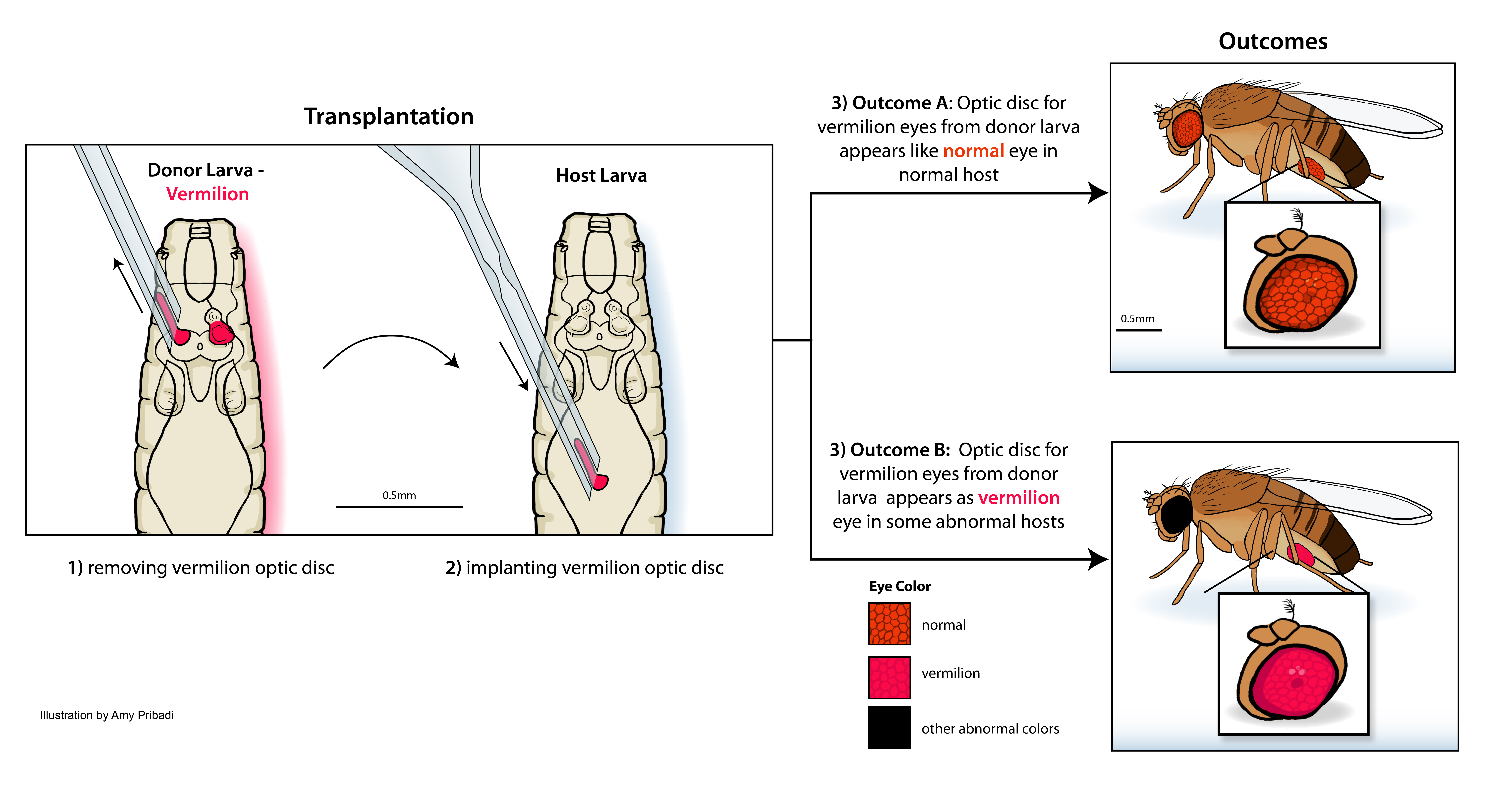Beadle and Ephrussi Show that Something Besides Eye Tissue Determines Eye Color in Fruit Flies

In the 1930s, George Beadle and Boris Ephrussi discovered factors that affect eye colors in developing fruit flies. They did so while working at the California Institute of Technology in Pasadena, California. (1) They took optic discs (colored fuchsia in the image) from fruit fly larvae in the third instar stage of development. Had the flies not been manipulated, they would have developed into adults with vermilion eyes. (2) Beadle and Ephrussi transplanted the donor optic discs into the bodies of several types of larvae, including those that would develop with normal colored eyes (brick red), and those that would develop eyes with other shades of red, such as claret, carmine, peach, and ruby (grouped together and colored black in the image). (3a) When implanted into normal hosts that would develop brick red eyes, the transplanted optic disc developed into an eye that also was brick red. (3b) When implanted into abnormal hosts that would develop eyes of some other shade of red, the transplanted optic discs developed into eyes that were vermilion. Beadle and Ephrussi concluded that there was a factor, such as an enzyme or some other protein, produced outside of the optic disc that influenced the color of the eye that developed from the disc.
Keywords
How to cite
Publisher
Handle
Rights
Articles Rights and Graphics
Copyright Arizona Board of Regents Licensed as Creative Commons Attribution-NonCommercial-Share Alike 3.0 Unported (CC BY-NC-SA 3.0)

